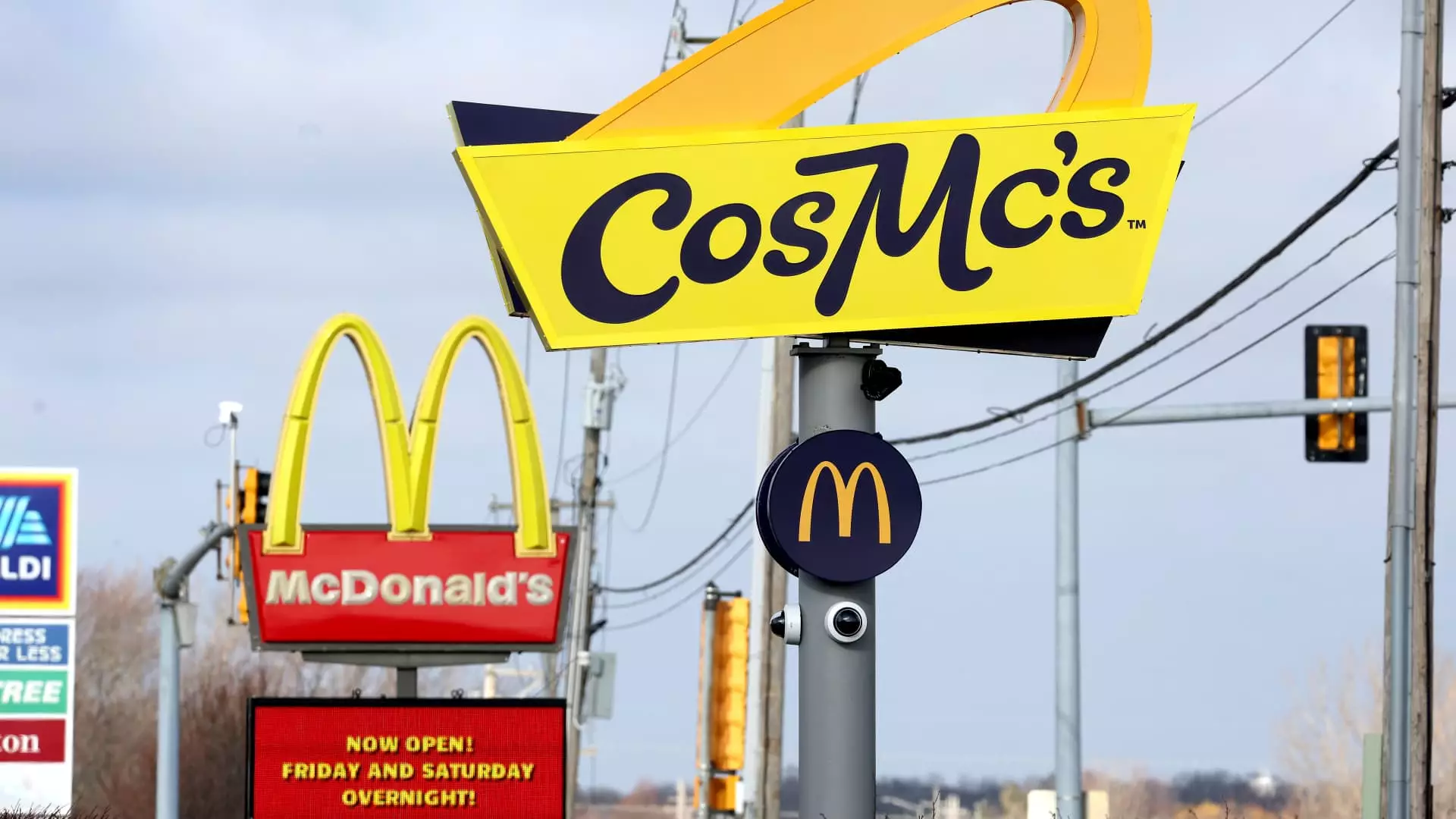In a bold, yet strategic maneuver, McDonald’s has decided to close three of its larger CosMc’s locations, a drinks-oriented spin-off aimed at capturing a unique segment of the beverage market. Initially established in Bolingbrook, Illinois, the concept was intended to explore a new storefront strategy for the fast-food leader, reflecting an increasing consumer demand for specialized beverage options throughout the day. With these closures and the opening of two additional smaller locations in Texas, it raises questions about the efficacy of the larger format in relation to consumer engagement.
The decision to pivot towards smaller restaurant formats stems from the initial data collected since the pilot’s launch. According to McDonald’s, smaller prototypes have shown better performance, suggesting that a more compact design could cater more effectively to customer preferences and usage patterns. Top-selling items like savory hash browns and novel drinks such as the Island Pick-Me-Up Punch not only highlight the trend of indulging in snackable bites but also signify the success of the brand’s unique beverage offerings. This adaptation indicates McDonald’s keen awareness of market dynamics and consumer preferences, particularly in an era dominated by customization and convenience.
Despite the closures, McDonald’s continues to see value in the CosMc’s initiative, which aims to tap into the “afternoon beverage pick-me-up occasion.” This aligns with broader trends we observe across fast-casual competitors, such as Starbucks and Dutch Bros., both of which effectively engage younger demographics with customizable cold drinks. CosMc’s diversifies its appeal by introducing innovative items like iced turmeric-spiced lattes and tropical Spiceade. This approach demonstrates McDonald’s effort not just to compete but to innovate within the beverage space, challenging the traditional burger and fries paradigm.
Brand Nostalgia Meets Modern Trends
Interestingly, the name “CosMc’s” draws from a forgotten McDonaldland mascot, signifying a clever intertwining of nostalgia and modern marketing strategies. CosMc, depicted as an alien with an insatiable craving for McDonald’s fare, presents a whimsical entry into a franchise that has long relied on cultural iconography to engage patrons. By reintroducing this character, McDonald’s cleverly bridges the past with present consumer engagement tactics. It serves as a sweet reminder for customers who grew up with these characters while attracting new clientele drawn to the quirky branding.
As McDonald’s presses forward with its testing phase, the goal appears to be not just survival but insightful adaptation within a competitive market landscape. With over 13,500 establishments in the U.S., the CosMc’s venture remains a small yet significant experimental footprint. The ongoing developments will allow McDonald’s to cultivate its understanding of shopper behaviors in an evolving marketplace, reinforced by a targeted loyalty program rolled out last year aiming to engage CosMc’s consumers more personally.
The lessons learned from this venture will likely influence McDonald’s overarching business strategy as it strives to remain relevant in a fast-changing food landscape, ultimately encompassing both its core menu and new experimental concepts.

